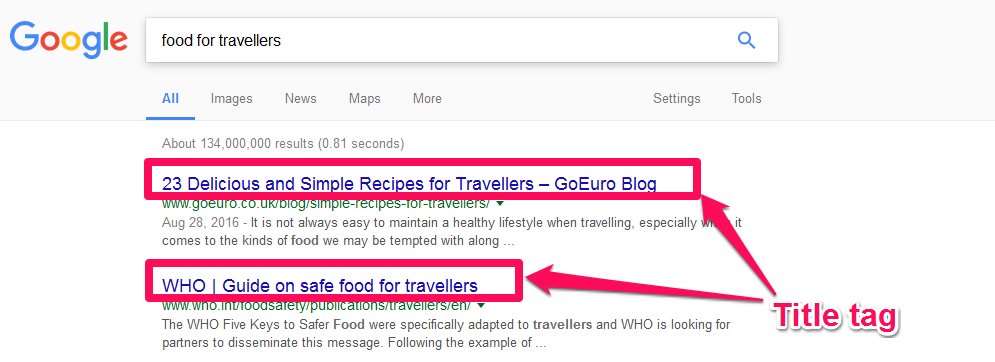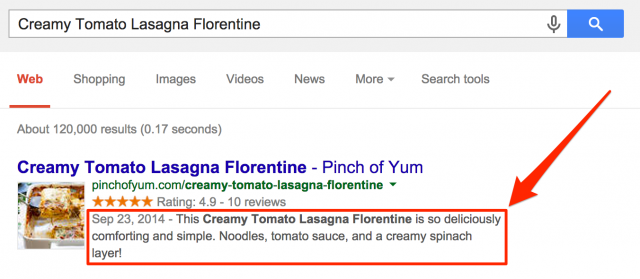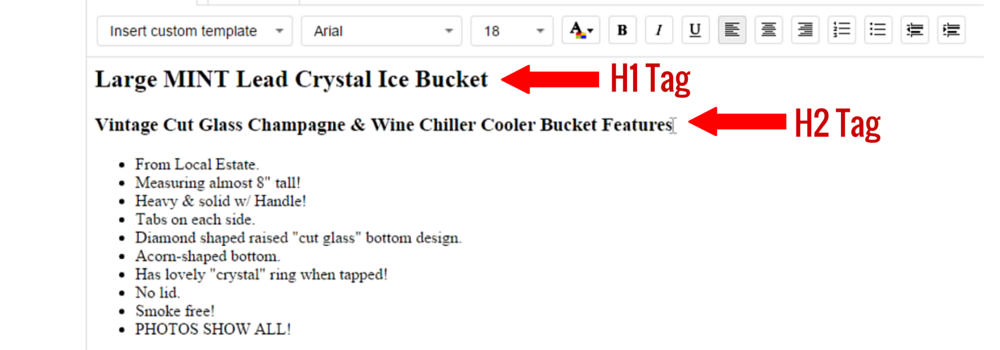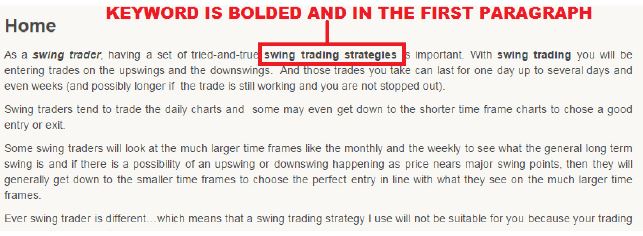By Airon Rodrigues
One of the forefront activities within SEO is conducting keyword research.
Identifying which keywords will work best for a product, service or business is extremely important.
But how about the actual placement of the keywords on a page? Does it make a difference where the keywords have been placed?
Absolutely.
In this blog post, we will discuss the most important places a keyword must be found to effectively optimise a web page for SEO.
Title Tags
Right from the beginning, the keywords need to be visible. There are two sections to include keywords within a header, the title, and the description.
The title tag is what appears within the search results:
It’s important to place keywords in the title because this is the first thing users see when surfing the web. Therefore, Google places a high importance on keywords within a page title, and if the keyword phrase is there, it will positively affect SEO.
In addition, it’s important to make sure the keyword is included in the beginning of the title as position matters. Google places a higher importance on the first few words as opposed to the last.
Meta Description Tags
Like title tags, meta descriptions are visible within the search results and help users better understand a listing before clicking through to the website.
The reason why keywords need to be placed within meta descriptions is so that Google can connect the description with the search query, once users see their search words within the description they are likely to click through to the website.
Descriptions are a great opportunity to sell a product or service, having an effective marketing message with the target key phrase can help influence who clicks on a web listing and who doesn’t.
URL’s
Unfortunately, not everyone can have their preferred domain name. However, URL’s should still be tailored towards the content of the page.
Like the page title, inserting a keyword within a URL helps Google understand the topic of a page. For example, businesses the produce weekly content such as blogs have an opportunity to optimise the URL on every published post, because every post would have its own unique topic, therefore, a unique URL.
As a general rule of thumb, keywords should only be included within URL’s if they accurately describe the content of a page. As always, keep user-friendliness in mind when optimising URL’s.
Heading & Subheadings
In SEO, it’s important to have one (and only one) H1 for each page. And of course, within the H1 heading, a keyword phrase should be placed. In addition, H2 headings should also contain the focus keyword.
Google views headings as the theme of a page, as they categorise the information as well as the topic for the page. Just like humans, search engine crawlers see headers as key information points to determine what the topic of the page is about.
Body Content
The body content makes up for most of the text of a page and tells Google exactly what the topic is about. Web crawlers not only search for keywords, but they also consider the surrounding text and everything on the page to determine what the topic is about.
Synonyms and variations of keywords can have a positive effect within the body copy. For example, if the target keyword is “counsellor”, words such as “counselling’, “therapist” or “therapy” can help describe the content of the page by using similar variations.
The key here is to not overload the content repeatedly with keywords, known as keyword stuffing, and to ensure the text is readable and helpful for users. It’s important to mention the target keyword within the first paragraph of copy, particularly within the first 100 words. This makes the topic of the page clear from the beginning which is something Google values highly.
Within the body content, anchor text is another important place for keywords. Anchor text is the text that is used inside of a hyperlink.
In the example below, “digital marketing” is the anchor text.
The time for investing in digital marketing is here.
Using keywords within anchor text is a great way to show their importance to search engine crawlers. When the anchor text represents a keyword phrase, it makes it easy for users to understand the reasoning behind the link and where it may lead to. Instead of using “click here” or “for more info”, a keyword can instead be used that is a good match for the target destination.
Image Names
Image file names should be optimised with keywords. When an image is uploading or soon to be published, the opportunity to name the file will be available. Here, keywords should be placed to clearly describe the image. Google reads file names and it’s especially important to include keywords here for the possibility of ranking in Google image searches.
Alt Attributes
ALT text, short for ‘alternative text’, act as a text alternative when a browser can’t completely render an image. Alt attributes describe the images on a page, if an image cannot be properly rendered, the alt text will explain the image in the form of text.
In general, Alt-text should be clear, descriptive, concise, and not stuffed with keywords.
Conducting keyword research is extremely important for any website starting out with SEO. However, knowing where to include keywords to successfully optimise a page can determine whether the page has a positive or negative effect.
Of course, including keywords in the places mentioned in this post doesn’t mean a page will automatically be number 1 for a search phrase, but it is certainly a good start to working a web page up the rankings.













